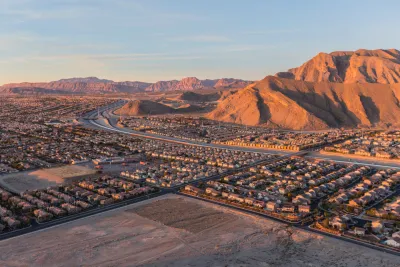Zoning codes are not the only kind of land use control that has built the U.S. residential market on the suburban model for more than a century, according to a recent article in The Urbanist.

Zoning codes are only one of four land use controls that evolved as an impediment to missing middle housing, according to an article by Ray Dubicki. Therefore, argues Dubicki, zoning reform is a “big deal and vital change if we are to overcome the housing affordability and meet our climate goals,” but more action will be necessary.
In addition to zoning, Dubicki identifies subdivision, covenants, and mortgages as the “four legs” of the housing table, working together for over a century to prioritize single-family detached housing in automobile dependent sprawl.
The article, linked below, explains how each of the non-zoning legs of the housing table contribute to single-family sprawl. Subdivisions, for example, are specifically designed to create separate lots, with adequate infrastructure service to each lot. “The result is asphalt everywhere and bizarre lots just to support driveways,” writes Dubicki.
Covenants, on the other hand, exist to maintain the status quo—preventing change to single-family lots or uses. And mortgages also control the shape and size of buildings, according to the article. “Mortgages cannot be used for buildings with more than four units, and banks often separately limit themselves to writing loans for singles or duplexes only,” explains Dubicki.
“The hard truth is that all of these components lean against one another,” writes Dubicki to conclude the article, but that fact is not intended to dissuade the public from zoning reforms. “What we have is more of a to-do list so that exciting new concepts can actually work.”
A lot more detail on each of the four land use control concepts described here are included in the source article.
FULL STORY: Zoning Reform Alone Does Not Change Most Anti-Density Laws

National Parks Layoffs Will Cause Communities to Lose Billions
Thousands of essential park workers were laid off this week, just before the busy spring break season.

Retro-silient?: America’s First “Eco-burb,” The Woodlands Turns 50
A master-planned community north of Houston offers lessons on green infrastructure and resilient design, but falls short of its founder’s lofty affordability and walkability goals.

Delivering for America Plan Will Downgrade Mail Service in at Least 49.5 Percent of Zip Codes
Republican and Democrat lawmakers criticize the plan for its disproportionate negative impact on rural communities.

Test News Post 1
This is a summary

Test News Headline 46
Test for the image on the front page.

Balancing Bombs and Butterflies: How the National Guard Protects a Rare Species
The National Guard at Fort Indiantown Gap uses GIS technology and land management strategies to balance military training with conservation efforts, ensuring the survival of the rare eastern regal fritillary butterfly.
Urban Design for Planners 1: Software Tools
This six-course series explores essential urban design concepts using open source software and equips planners with the tools they need to participate fully in the urban design process.
Planning for Universal Design
Learn the tools for implementing Universal Design in planning regulations.
EMC Planning Group, Inc.
Planetizen
Planetizen
Mpact (formerly Rail~Volution)
Great Falls Development Authority, Inc.
HUDs Office of Policy Development and Research
NYU Wagner Graduate School of Public Service





























